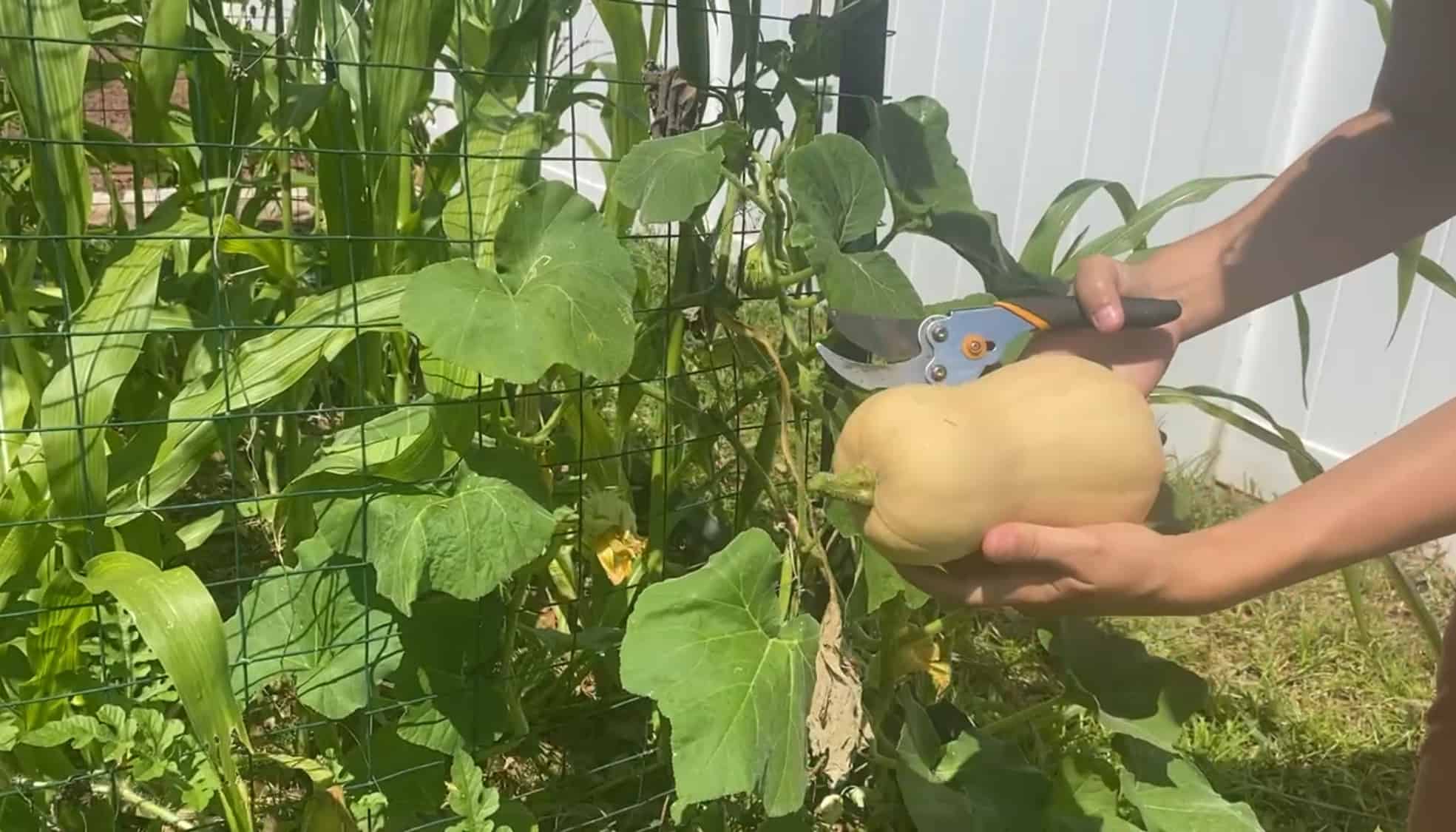Last Updated on February 15, 2024 by Homegrown Florida
Embarking on the journey to grow winter squash in Florida involves navigating through various challenges, including preventing pests. In this post, we’ll explore the nuances of cultivating winter squash, with a particular focus on the tip that propelled success in this endeavor.
Diving into Squash Varieties
Before delving into the key tip, let’s briefly discuss the varieties of winter squash grown in this venture. Three traditional choices took center stage – spaghetti squash, acorn squash, and butternut squash.
Spaghetti Squash (Tivoli): Despite past challenges, the semi-bush variety of spaghetti squash called Tivoli emerged as a favorite, characterized by a sprawling vine that demands ample space
Acorn Squash (Table Queen): The table queen acorn squash, with its compact size and tough skin, provided some resistance against bugs and powdery mildew.
Butternut Squash (Waltham): Opting for the vining variety of Waltham butternut squash proved fruitful, showcasing robust growth and a higher yield.

Direct Seeding vs. Transplanting Experiment
A crucial aspect to grow winter squash in Florida involved experimenting with direct seeding versus transplanting. The test aimed to determine which method yielded better results. Interestingly, both methods behaved similarly, with a note to transplant seedlings within three to four weeks to avoid transplant shock.
Nurturing with Compost and Fertilizer
After settling the squash plants into the beds, the focus shifted to their nourishment. Compost laid the foundation, complemented by occasional applications of Gardentone fertilizer. Notably, the squash plants didn’t require excessive intervention and flourished with minimal assistance.
Combatting Bugs and Powdery Mildew
The biggest challenges of bugs and powdery mildew were tackled strategically. Squash vine borers posed a significant threat, especially to bush varieties. Protective measures involved wrapping the stems with materials like toilet paper rolls or aluminum foil. Additionally, Spinosad, applied selectively and thoughtfully, proved effective against moth worms and their eggs.
Powdery Mildew Management
Powdery mildew, a persistent adversary, received careful attention when growing winter squash in Florida. The key lesson learned was to promptly remove affected leaves during dry mornings to curtail the spread. Gloves and dedicated clippers ensured a targeted and hygienic approach to tackling powdery mildew. Then spraying with a fungicide like copper or hydrogen peroxide mix will curtail ongoing infection.
Harvest and Curing Winter Squash
Determining the right time for harvest was critical. Factors like size, color, and stem condition played a role. Post-harvest, the curing process commenced, involving exposure to sunlight and warmth to harden the skin. Alternatively, indoor curing on the counter is a viable option.

The Game-Changing Tip: Timing is Everything
Now, the highlight of the successful squash-growing endeavor – the number one tip: timing. Departing from conventional schedules, the decision to start squash transplants and direct seeding in February, well before the last frost date, proved instrumental. This strategic timing minimized the impact of powdery mildew, ensured robust plant growth before pest emergence, and contributed to a remarkable yield.
In the realm of winter squash cultivation in Florida, mastering the art involves a combination of variety selection, planting methods, vigilant pest management, and, most importantly, impeccable timing. Aspiring squash growers, take note: sometimes, defying traditional calendars can be the key to a thriving harvest. Happy gardening!



